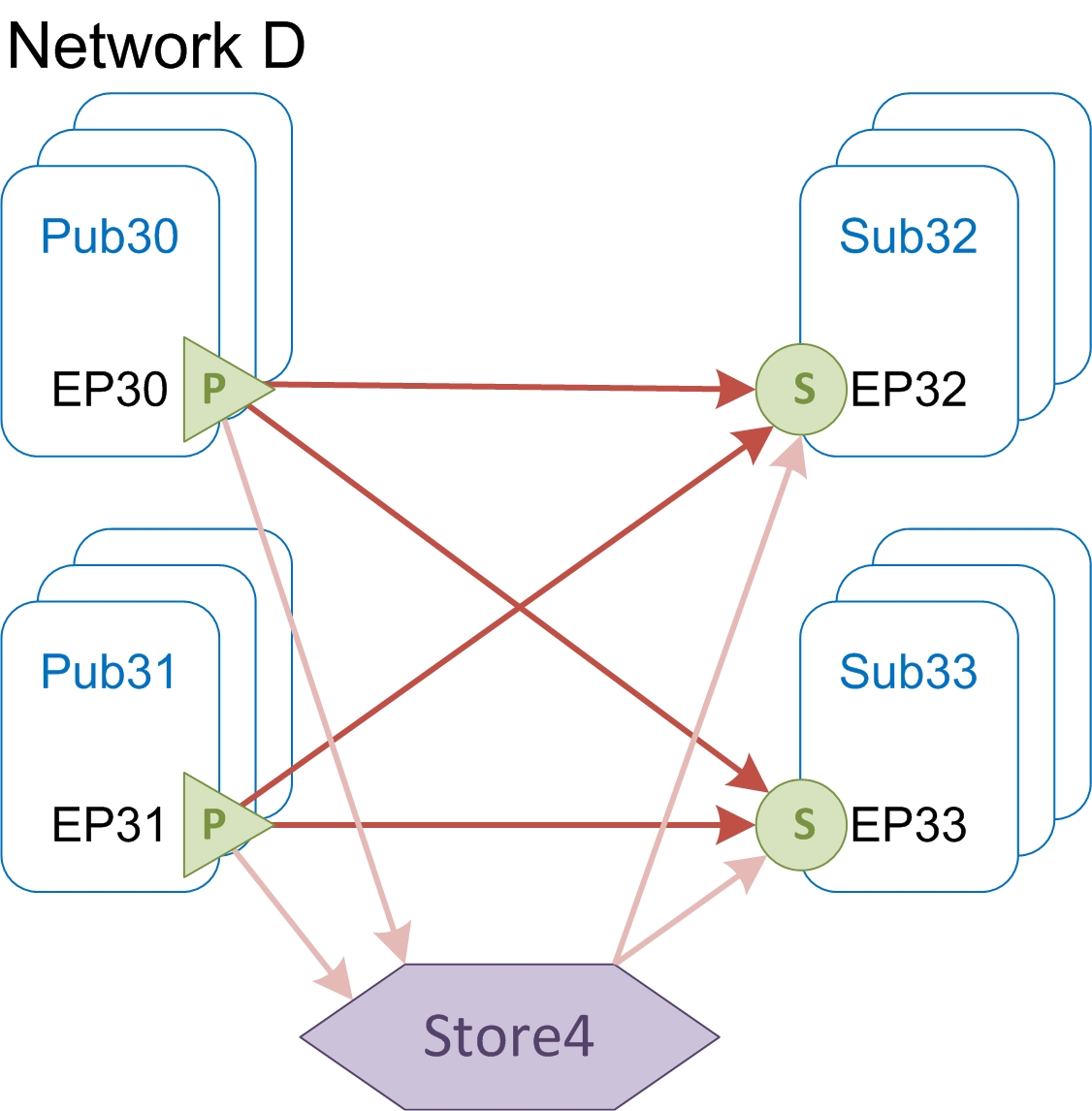Direct Paths and Merging
This example returns for a closer look at two aspects of persistence stores: the direct versus indirect paths, and the merging of publisher streams into one message stream.
Direct Path
The diagram depicts a network of endpoints.
- Network D consists of endpoints EP30 through EP33, connected by direct-path transports (dark red arrows). A direct-path transport connects every publishing endpoint to every subscribing endpoint.
- Store4 backs messages published on the transports of network D. That is, it backs messages from all publishers P, and makes them available at all subscribers S (as depicted by light arrows). Store4 is an intermediate hop, part of several parallel, indirect paths in network D. (For example, one path is from EP30 to Store4 to EP32.)
- Actually, network D is not more topologically complex than network A in the earlier diagram Store Backs a Transport. Rather, we have drawn more detail to highlight the direct paths, and the merging of publisher message streams.
Merging within a Network of Endpoints
Now focus on the publisher message streams in the diagram:
- Each direct path flowing from EP30 merges message streams from potentially many publishers in the potentially many program processes that publish on EP30. When a message arrives at a subscriber, it does not include information that identifies the publisher nor the publishing program.
- Similarly, Store4 merges the message streams from publishing endpoints EP30 and EP31. When a message eventually arrives at a subscriber, it does not include information that identifies the publisher nor the publishing program.
Copyright © Cloud Software Group, Inc. All rights reserved.

